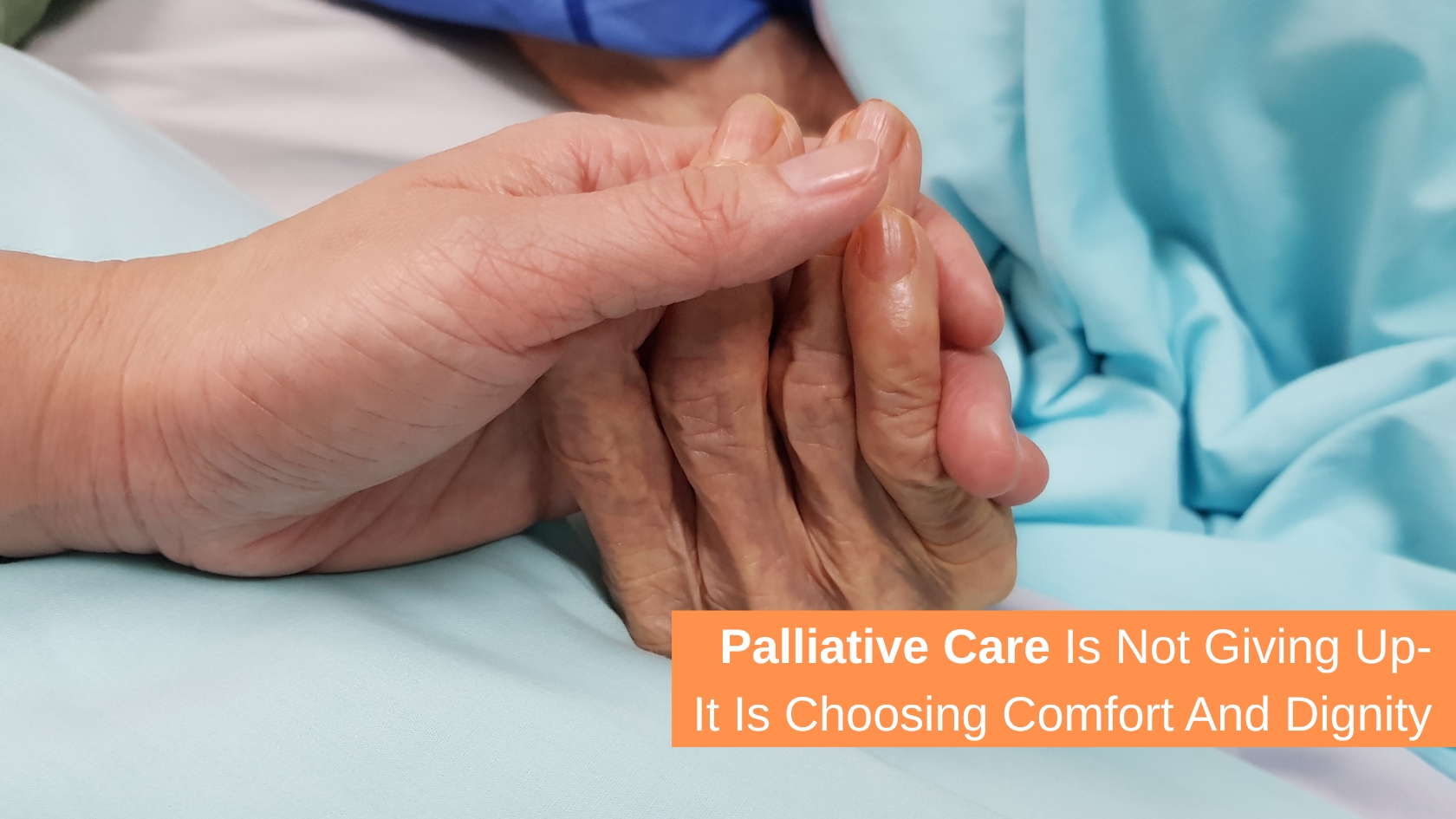
Palliative Care Is Not Giving Up- It Is Choosing Comfort And Dignity
38-year-old Shaistha Verma was livid when the doctor advised her father, My Shirish Krishnamurthy- a retired mathematics teacher in Secunderabad to sign up for palliative care. Mr Krishnamurthy, who was suffering from stage-1 stomach cancer, had just begun chemotherapy and was dealing with significant pain and other side effects of the therapy.
“I was shocked when the doctor said palliative care,” recollects Shaistha. “My father was not dying for heaven’s sake, and had family who had no reason to abandon him and leave him at the mercy of caregivers!”
Shaistha Verma was unaware of the truth about palliative care, but so are many others who still believe that palliative care is for the terminally ill and a place where people are left to die.
“Palliative care is very often misunderstood,” says Karthik Menon, a marketing executive from a rehabilitation centre based out of Bengaluru. The primary objective of palliative care is to offer a comfortable environment to people dealing with chronic illnesses to experience relief from symptoms, de-stress themselves, and be better prepared to accept treatment to recover optimally.”
According to him, palliative care can begin immediately after the diagnosis of the condition or when the treatment is about to start.
Decoding palliative care
Palliative care offers special care to support all those who are grappling with chronic medical conditions, and also to their families and caregivers. It’s not for the ones who are dying. It’s for anyone who has a chronic condition that interferes with their quality of life.
The program is designed to help manage symptoms more effectively, offer social and spiritual support, and provide comfort and support to patients who require the most assistance to physically and emotionally cope with their situation. In simple terms, it aims to enhance the quality of life for patients and their families. Think of it as an extra layer of care, in addition to the medical treatment, tailored to the patient’s needs. The module can help people of all ages and at any stage of illness.
The care can be given at a hospital, a clinic, within the comfort of one’s home, and in a continuum care or assisted living facility.
The conditions it helps manage are:
• Amyotrophic lateral sclerosis (ALS)
• COVID-19
• HIV and AIDS
• Liver disease
• Lung diseases like COPD and emphysema
• Multiple sclerosis (MS)
Palliative care is not a one-man show, though. The care is a result of dedicated and endless collective effort by doctors, palliative care nurses, psychologists, nutritionists, caregivers, physiotherapists, occupational therapists, alternative medicine therapists, and even spiritual workers. Each one plays a significant role in providing the patient with the right tools, therapies, and diet for maximum comfort.
The symptoms that are addressed include pain, anxiety, depression, fatigue, nausea, breathlessness, insomnia, and digestive issues like loss of appetite, diarrhea, or constipation. This is done through breathing and cognitive exercises, medication, relaxation techniques, and nutritional food. The team helps the person understand their medical condition, accept it, and move forward with the right advice and attitude for treatment. They also counsel the family members to help them deal with the situation and stress, and connect them to support groups and other community resources.
The benefits of palliative care
- Studies have revealed that people who received palliative care in advanced stages of illnesses enjoyed better quality of life and lived longer in comparison to those who didn’t.
- Effective management of severe symptoms.
- More comfort, more positivity, and reduced risk of anxiety and depression.
- Education for making the right medical decisions.
- Support for family members
- Enhanced satisfaction for caregivers.
- Improved preparedness to accept and cope with the illness.
- Increased independence and reduced helplessness in patients
Palliative care is only for last-stage cancer patients; it is given to people who have no hope of living, it makes people dependent and helpless, it means patients are treated poorly and left to die… are all myths that have been floating around under the heavy atmosphere of ignorance and misinformation.
It’s time to step out of the delusion and take the initiative to educate oneself to help their loved ones live through their challenging days of illnesses and discomfort with more dignity, comfort, and a sense of self-respect.
Related
BY: Sukino
COMMENTS: No Comments
